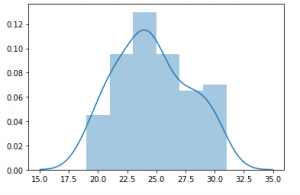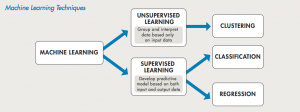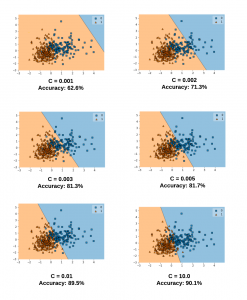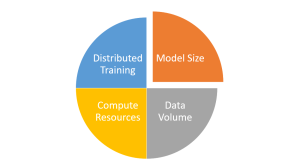Category Archives: AI
7 Free MIT AI / Machine Learning Courses: Enroll Now!

Are you eager to dive into the world of machine learning and AI but worried about the costs? Are you fascinated by how data analytics can shape the future of various industries? What if you could access top-notch education from one of the leading institutions in the world, absolutely free? In the next six months, MIT is offering seven upcoming free courses designed to equip you with the knowledge and skills in machine learning, AI, and data analytics. Whether you’re a seasoned professional looking to upskill or a beginner ready to embark on a new journey, these courses provide an incredible opportunity. In this blog, we’ll delve into the details …
IIT Madras Fellowship in AI for Social Good

Are you an AI researcher driven by the passion to make a positive impact on society? Do you seek to use your knowledge in machine learning and AI to contribute to real-world issues? Are you intrigued by the idea of joining a leading interdisciplinary research center for data science in India? Then here is the opportunity to discover a unique opportunity that aligns with your aspirations and expertise at the Robert Bosch Centre for Data Science and Artificial Intelligence (RBCDSAI), IIT Madras. Apply Now for fellowship program in AI for social good. About RBCDSAI RBCDSAI is one of India’s pre-eminent interdisciplinary research academic centers specializing in Data Science and AI. …
Exploring Amazon Science Publications: A Quick Guide

In the ever-evolving world of technology and research, staying updated with the latest advancements is crucial. Amazon Science Publications has emerged as a treasure trove for those hungry for knowledge, offering a plethora of articles that span a wide range of topics. Whether you’re an AI / ML researcher, a student, or just a curious mind, this platform has something for everyone. Let’s delve into the vast ocean of articles available on Amazon Science Publications. Research Areas: Tags: Conferences: Journals: Date: Whether you’re looking for the latest articles from 2023 or want to revisit the gems from 2015, Amazon Science Publications has got you covered. With articles spanning from 2015 …
Loan Eligibility / Approval & Machine Learning: Examples

It is no secret that the loan industry is a multi-billion dollar industry. Lenders make money by charging interest on loans, and borrowers want to get the best loan terms possible. In order to qualify for a loan, borrowers are typically required to provide information about their income, assets, and credit score. This process can be time consuming and frustrating for both lenders and borrowers. In this blog post, we will discuss how AI / machine learning can be used to predict loan eligibility. As data scientists, it is of great importance to understand some of challenges in relation to loan eligibility and how machine learning models can be built …
Machine Learning NPTEL Online Courses List 2023
Machine learning is a rapidly evolving field that has gained immense popularity in recent years. As technology continues to advance, the demand for professionals with expertise in machine learning continues to soar. If you’re someone who is interested in diving deep into the world of machine learning or looking to enhance your existing knowledge, the NPTel courses are an excellent avenue to explore. The National Programme on Technology Enhanced Learning (NPTel) is a joint initiative by the Indian Institutes of Technology (IITs) and the Indian Institute of Science (IISc). It offers a wide range of online courses across various disciplines, including computer science and engineering. In this blog, we will …
Binomial Distribution Explained with Examples

Have you ever wondered how to predict the number of successes in a series of independent trials? Or perhaps you’ve been curious about the probability of achieving a specific outcome in a sequence of yes-or-no questions. If so, we are essentially talking about the binomial distribution. It’s important for data scientists to understand this concept as binomials are used often in business applications. The binomial distribution is a discrete probability distribution that applies to binomial experiments (experiments with binary outcomes). It’s the number of successes in a specific number of trials. Sighting a simple yet real-life example, the binomial distribution may be imagined as the probability distribution of a number …
Top US Universities for AI / ML Research

Artificial Intelligence (AI) has become an essential driver of innovation and economic growth in the 21st century. As a result, some of the best universities in the United States have been investing heavily in AI research to push the boundaries of this rapidly evolving field. In this blog post, we will explore the top 10 US universities for AI research, highlighting their achievements and providing links to their AI research homepages. Several leading / best universities in the United States have emerged as pioneers in AI research, recognizing its crucial role in driving innovation and economic growth. These institutions have made significant investments to establish themselves as top destinations for …
Facebook Responsible AI: Lessons, Examples

As technology continues to advance, it’s important that we prioritize ethical considerations and ensure that the development and deployment of AI technologies are responsible and fair. Meta (formerly known as Facebook) recognizes the importance of responsible AI and has taken several steps to ensure that their AI systems are developed and deployed in an ethical and fair manner. In this blog post, we’ll be exploring the latest responsible AI updates from Meta, which every company should take into consideration when developing and implementing their own AI strategies and systems. I will keep the blog short and crisp. If you want greater details, visit this page. Use Varied Datasets & Robust …
Andrew Ng & OpenAI ChatGPT Prompt Engineering Course

Renowned artificial intelligence (AI) experts, Andrew Ng from DeepLearning.ai and Isa Fulford from OpenAI, have teamed up to offer an exciting new course on prompt engineering, titled “ChatGPT Prompt Engineering for Developers“. The course, which is completely free, aims to help developers better understand the prompts design and implementation for various use cases. The ChatGPT Prompt Engineering course is specifically tailored for developers including data scientists who wish to learn more about designing prompts for different tasks including software development (coding), marketing, creating product reviews & description, writing essay, summarizing text etc. It includes several important topics such as summarizing, inferring, transforming, expanding and chatbot building. These skills are essential …
Supervised & Unsupervised Learning Difference

Supervised and unsupervised learning are two different common types of machine learning tasks that are used to solve many different types of business problems. Supervised learning uses training data with labels to create supervised models, which can be used to predict outcomes for future datasets. Unsupervised learning is a type of machine learning task where the training data is not labeled or categorized in any way. For beginner data scientists, it is very important to get a good understanding of the difference between supervised and unsupervised learning. In this post, we will discuss how supervised and unsupervised algorithms work and what is difference between them. You may want to check …
ChatGPT Prompt for Job Interview Preparation

Preparing for a job interview can be a nerve-wracking experience. It’s natural to feel a sense of pressure as you try to impress your potential employer and secure the job you’ve been dreaming of. However, with the right preparation, you can increase your chances of acing the interview and landing the job. That’s where ChatGPT comes in. As a powerful language model trained by OpenAI, ChatGPT is equipped with the knowledge and expertise to provide you with valuable insights and prompts to help you prepare for your job interview. In this blog, we’ll explore some of the ways that ChatGPT can assist you in your job interview preparation. Whether you’re …
OpenAI’s Business Case Studies & Use Cases

In today’s fast-paced world, businesses are constantly searching for new and innovative ways to stay ahead of the competition and artificial intelligence (AI) is one of the key technology enabler driving innovation and bringing competitive edge. One of the most promising AI technologies in recent years has been generative AI, which has the potential to transform the way companies operate and interact with customers. Among the leading generative AI platforms available today is OpenAI, a pioneer company in the field of generative AI that is dedicated to advancing AI in a safe and beneficial way. In this blog, we will explore OpenAI’s potential case studies and related use cases for …
Amazon Bedrock to Democratize Generative AI

Amazon Web Services (AWS) has announced the launch of Amazon Bedrock and Amazon Titan foundational models (FMs), making it easier for customers to build and scale generative AI applications with foundation models. According to AWS, they received feedback from their select customers that there are a few big things standing in their way today in relation to different AI use cases. First, they need a straightforward way to find and access high-performing FMs that give outstanding results and are best-suited for their purposes. Second, customers want integration into applications to be seamless, without having to manage huge clusters of infrastructure or incur large costs. Finally, customers want it to be …
SVM RBF Kernel Parameters: Python Examples

Support vector machines (SVM) are a popular and powerful machine learning technique for classification and regression tasks. SVM models are based on the concept of finding the optimal hyperplane that separates the data into different classes. One of the key features of SVMs is the ability to use different kernel functions to model non-linear relationships between the input variables and the output variable. One such kernel is the radial basis function (RBF) kernel, which is a popular choice for SVMs due to its flexibility and ability to capture complex relationships between the input and output variables. The RBF kernel has two important parameters: gamma and C (also called regularization parameter). …
Data Science Careers: India’s Job Market & AI Growth

Aspiring data scientists and AI enthusiasts in India have a plethora of opportunities in store, thanks to the country’s booming AI, machine learning (ML), and big data analytics industry. According to a recent report by NASSCOM, India boasts the second-largest talent pool globally in these fields, with a remarkable AI skill penetration score of 3.09 [1]. The nation’s rapid growth in AI talent concentration and scientific publications underscores the immense potential for individuals looking to build a successful data science career in India. As the demand for skilled professionals surges, multiple factors contribute to the thriving industry. The higher-than-average compensation and growth prospects in the field make it an attractive …
Generative AI: Scaling Techniques for LLM Models

In the rapidly evolving world of artificial intelligence, large language models (LLMs) have emerged as a game-changing force, revolutionizing the way we interact with technology and transforming countless industries. These powerful models can perform a vast array of tasks, from text generation and translation to question-answering and summarization. However, unlocking the full potential of these LLMs requires a deep understanding of how to effectively scale these LLMs, ensuring optimal performance and capabilities. In this blog post, we will delve into the crucial concept of scaling techniques for LLM models and explore why mastering this aspect is essential for anyone working in the AI domain. As the complexity and size of …
I found it very helpful. However the differences are not too understandable for me